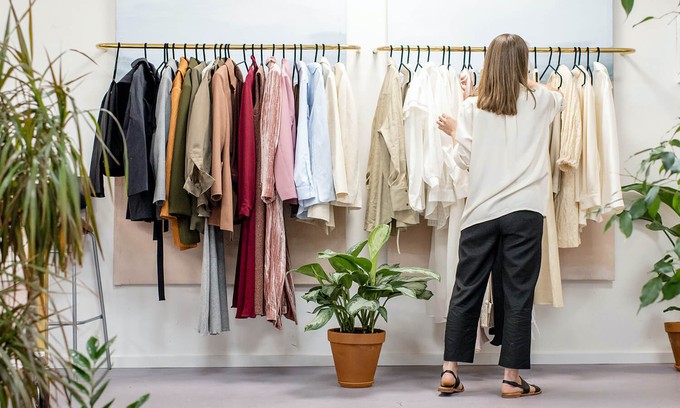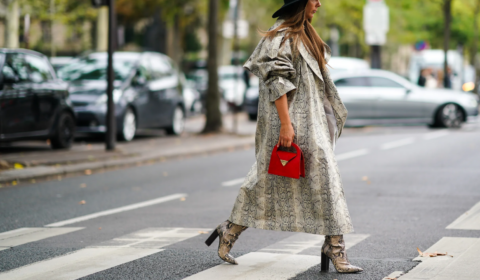How fast fashion companies play on our psyche
It’s helpful if we delve into the psychology behind fast fashion first.
Major companies like H&M, Zara, and more recently PrettyLittleThing and FashionNova, are experts in identifying upcoming trends from pre-season fashion shows. With this knowledge in hand, they replicate upcoming trends through cheap overseas labour and with the use of unsustainable, poorly sewn fabrics.
Instead of producing 1,000 units of an item as the original fashion house did, fast fashion companies produce around 100,000 units of each style. They do this because purchasing fabrics and producing in bulk significantly lowers the total production cost – as well as the price at which they can sell items to the masses.
This is why you, I, and thousands of others have found ourselves thinking ‘I have that top’ when spotting someone walking down the street. The item has been sold so cheaply and in such abundance that it seems like everybody has it.
As a result, we quickly become bored of ‘that top’. It winds up bunched at the bottom of our wardrobes, its 70 percent plastic fabric crinkling for the rest of eternity. Or until we find someone who will buy it on Vinted for £1.
This, though commonplace nowadays, is a relatively new way of consuming fashion. In 2016, shoppers bought 60 percent more clothing items than they did in the year 2000 – but they only wore or kept each item for half as long.
Sixty percent more than a decade and a half before. That’s a huge discrepancy, one that’s likely soared higher in 2023.
Without a doubt, the driver of this behaviour stems from the fact that we are sent marketing messages every time we open our smartphones. Pair this with a culture of not daring to post the same outfit twice on social media and fast fashion has stumbled upon a beautiful, perfect storm.
So how do we escape it?
The argument for capsule collections
‘we really killing the planet for some SHEIN dresses. that’s crazy,’ is a tweet that has stuck in my mind ever since I saw it.
For those whose values disagree with the practices of fast fashion companies – ie. human rights protections, concern for the planet, or a combination of both – the choice to switch to a capsule-style closet was likely made long ago.
If you’re not worried about the ethical side of things… well, I’m not here to shame you.
A wide majority of people are too caught up in the on-goings of their own lives to think long and hard about how a £5 miniskirt made it all the way from Bangladesh and into their closet.
But you at least have to be slightly annoyed at the system that is pulling you, urging you, and constantly winning at the game of convincing you to spend your hard-earned money on clothing that barely fits right and struggles to retain its quality.
A combination of all of these things is what made me embrace the capsule collection. Perhaps the thought of it will make you do so, too.
So how do I start?
By definition, a capsule collection is made up of 10-50 (give or take a few) practical and versatile pieces of clothing that can be used during any season. These items won’t be rooted in any trend, but will rather be timeless and high quality.
Think crisp white t-shirts, cotton long-sleeve tops, a couple of pairs of well-made jeans and shorts, skirts, plus coats or jackets with zippers and buttons that stay intact through many winters.
Before adding to your closet, you can first benefit from letting go of excess items in your wardrobe. Reselling items you don’t use any more is a great way to start making room (and some extra cash) for new pieces that will look and feel good for years.
Buying less often – and only good quality pieces – will ensure you spend less because you’ll think longer about whether you truly want them. Getting ready in the morning and dressed up for nights out becomes a snap when you can actually see each item you own clearly.
This, research has found, also helps with feeling less stressed in general.
Not to mention, with 30 percent of dust found in the average household caused by cheap clothing using microplastic-shedding fabrics, your house may have just gotten easier to tidy up.
Bearing all this in mind, everyone is different and I don’t think there are any hard and fast rules for embracing the journey towards a simplified wardrobe. Since excellent quality clothing is generally pricier, patience is key. It will likely take some time to build.
And of course, from time to time, we will splurge on something extra. We’re human and that’s okay. But the madness of ordering new, disposable clothing every other week has to stop at some point.
Why not start with a baby step today?























